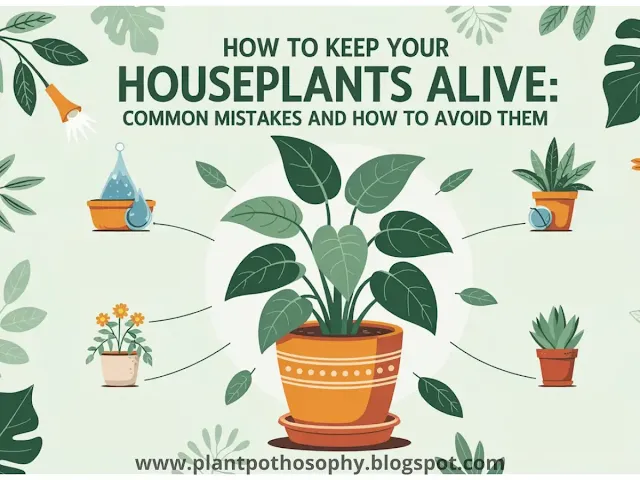How to Keep Your Houseplants Alive: Common Mistakes and How to Avoid Them
Houseplants bring life into our homes, but keeping them thriving isn’t always as simple as it seems. Many plant owners unknowingly make mistakes that lead to drooping leaves, yellowing foliage, or even a full-on plant demise. Here are some common missteps and how to correct them to ensure your plants stay happy and healthy.
Essential Houseplant Care: Common Mistakes to Avoid for Healthy, Thriving Plants
- Overwatering and Underwatering: One of the most frequent causes of plant stress is improper watering. Overwatering suffocates roots and causes root rot, while underwatering leaves plants dry and brittle. Instead of following a rigid schedule, check the soil moisture by sticking your finger an inch deep—if it’s dry, it’s time to water. Also, ensure your pots have drainage holes to prevent water from pooling at the bottom.
- Poor Light Conditions: Not all plants require the same amount of sunlight, yet a common mistake is placing them in spots that don’t match their needs. Low-light plants, like pothos or snake plants, can survive in dim corners, while sun-loving ones, such as succulents, need bright, direct light. Observe your plant’s behavior—leggy growth often signals a need for more light, while scorched leaves indicate too much sun exposure.
- Ignoring Humidity Needs: Many houseplants originate from tropical environments and thrive in high humidity. Dry indoor air, especially during winter, can cause browning leaf edges. To counteract this, mist your plants occasionally, use a humidity tray, or group plants together to create a micro-humid climate.
- Using the Wrong Soil: Different plants require different soil types. Succulents and cacti prefer well-draining, sandy mixes, while ferns and tropical plants need moisture-retentive soil. Using the wrong soil type can lead to poor drainage or inadequate nutrient retention, both of which can negatively affect plant health.
- Neglecting Repotting: As plants grow, they outgrow their pots, leading to root-bound conditions where roots circle the container and struggle to absorb nutrients. Repot your plants every one to two years using a slightly larger pot with fresh soil to encourage continued growth.
- Skipping Fertilization: Plants need nutrients to thrive, but too much or too little fertilizer can be harmful. Over-fertilization can burn roots, while under-fertilization leads to slow growth and pale leaves. A balanced approach—feeding during active growth seasons (spring and summer) and reducing in winter—will keep plants well-nourished.
- Placing Plants Near Drafts or Heat Sources: Temperature fluctuations from heaters, air conditioners, or drafty windows can stress plants, leading to leaf drop or wilting. Keep plants away from vents and drafts, and try to maintain a consistent temperature range suited to your plant’s needs.
- Not Paying Attention to Pests: Common houseplant pests like spider mites, aphids, and fungus gnats can wreak havoc if unnoticed. Regularly inspect leaves and stems for signs of infestation, and treat early with natural remedies like neem oil or insecticidal soap before they become a bigger problem.
Watering Woes: How to Find the Right Balance
Watering is one of the trickiest aspects of houseplant care. Too much water can suffocate your plant’s roots, leading to root rot and unhealthy growth, while too little water can cause dehydration and stress. The key to finding the right balance is to observe your plant and adjust based on its needs. A good rule of thumb is to check the soil’s moisture by sticking your finger about an inch deep—if it feels dry, it’s time to water. However, it’s also important to consider your plant’s specific requirements: some plants prefer consistently moist soil, while others, like succulents, thrive in drier conditions. Always ensure your pot has proper drainage to prevent water from sitting at the bottom, which can lead to waterlogging. By learning to read your plant and adjusting your watering schedule accordingly, you’ll help your greenery flourish without the stress of over or underwatering.
The Importance of the Right Soil: Avoiding Drainage and Nutrient Issues
Taking care of houseplants doesn’t have to be complicated. By understanding their needs and avoiding these common mistakes, you can create an environment where your plants thrive. A little observation and adjustment go a long way in ensuring they stay lush, healthy, and vibrant. With the right care, your indoor greenery will continue to bring joy and beauty into your home for years to come!

